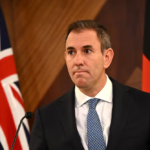Turning crisis into opportunity

Not since World War II has Australia experienced such an extended period of national crisis. It’s now been more than 10 months since the onset of the Black Summer bushfires, the worst on record in terms of the area burnt and the number of properties destroyed.
Only a few weeks separated the end of that crisis, which directly affected almost 60% of Australians, from the outbreak of the pandemic that has profoundly affected us all.
Many more months of national crisis lie ahead, not only due to the ongoing health risks, as the current spikes in infections in Melbourne suggest, but also because the economic impacts of the pandemic will linger far longer than its health impacts.
Crises can also be great opportunities to fundamentally reduce the risk of future calamities. The disruptions they cause tend to unite the public in supporting (or demanding) bold policy action from their governments.
The extraordinary global reduction in loss of life from disasters over recent decades was achieved in this way: the destruction caused by earthquakes, cyclones and other catastrophes triggered public demand for action that led to major new disaster legislation, changes to building codes, and investments in early warning systems, evacuation planning and other risk-reduction measures.
We also saw this dynamic in the aftermath of the bushfires. Under heavy public criticism for his response to the catastrophe, Prime Minister Scott Morrison proposed exceptional steps to strengthen Australia’s resilience to future disasters, including expanding the role of the defence force in disaster relief and using the authority of the federal government to declare a national emergency in response to widespread and severe natural disasters.
He also announced a royal commission into the bushfires, which will deliver recommendations in October that will include measures to build our resilience to climate change.
The government has also taken extraordinary measures to slow the spread of Covid-19 and cushion Australians from the economic impacts. Many more measures are likely in the months ahead to stimulate the economy and build Australia’s resilience to future pandemics in areas such as disease surveillance, vaccine development and securing critical supply chains.
These unfolding responses to the bushfires and Covid-19 are an unprecedented opportunity to strengthen Australia’s resilience to future disasters. But to capitalise on the opportunity, Canberra needs to overcome three main challenges.
The first is the tendency of governments to focus heavily on initiatives that strengthen our emergency response capacity, while neglecting measures that reduce the likelihood of future emergencies. Canberra’s funding for mitigating disaster risk amounts to only about 3% of what the federal government spends on post-disaster responses.
In building a more resilient Australia, we need to strike a better balance between investments in disaster response capacity, such as acquiring additional fire-fighting equipment, and investments in disaster mitigation, such as disaster-risk-sensitive land-use planning. Over the longer term, the latter will save more lives and property than the former.
This investment imbalance has also been a feature of international funding for responses to health emergencies. During the 2009 swine flu pandemic, for example, the money flowed freely to build the emergency response capacity, but not for sustained measures to reduce the risk of future outbreaks. With Covid-19 we are now living with the consequences of this deficiency.
The second challenge to overcome is the tendency to compartmentalise various hazards and resilience planning in bureaucratic silos rather than treat them as a whole-of-government endeavour. Disasters do not fit neatly into bureaucratic silos.
The Black Summer demonstrated how rapidly a bushfire emergency can become an air-quality health emergency, a threat to our tourism industry and a biodiversity crisis. The pandemic’s knock-on effects across many sectors of society may ultimately be greater than the immediate health impacts.
There are clearly important links between disasters triggered by drought, floods and bushfires. We’ve seen recently how persistent drought can erode a community’s resilience to these other hazards, and all three are influenced by climate change.
Yet, because there are numerous government agencies and departments involved in addressing these hazards, responses need to be coordinated to avoid inefficiencies.
For example, droughts were excluded from the 2018 National disaster risk reduction framework, at least partly because bureaucratic responsibility for ‘drought’ sat with the Department of Agriculture and ‘disaster risk reduction’ sat with Emergency Management Australia within the Department of Home Affairs.
Bringing our resilience planning together at the whole-of-government level would also make it easier to ensure that our responses to one threat don’t inadvertently increase our exposure to others.
For example, the government is currently considering investments in infrastructure to stimulate employment in the wake of the pandemic. New infrastructure should not be funded in places or designed in ways that are vulnerable to flooding and other disaster risks that climate change is intensifying.
To overcome the bureaucratic silos and facilitate a multi-hazard, whole-of-government approach, national resilience planning should be coordinated at the highest level of government, not by any one ‘sectoral’ agency or department.
A useful model for this is the digital technology taskforce that was recently established in the Department of the Prime Minister and Cabinet. It includes membership from across government departments, and involves the private sector and communities, all of which also have key roles to play in building a more climate change– and disaster-resilient Australia.
The third challenge the federal government needs to overcome is the tendency to assume that ambitious disaster resilience objectives can be achieved solely by establishing new, or topping up existing, ‘resilience’ funds.
Programs such as the Future Drought Fund and the Disaster Recovery Funding Arrangements are important resources for local communities, but Canberra is missing opportunities to leverage the far larger funding the Commonwealth and states and territories provide to support local governments in areas such as transport, education, manufacturing, energy and water supply, health, tourism, agriculture and fisheries.
Incorporating provisions for resilience within the guidelines and specifications for these broader sectoral investments would have an enormous multiplier effect.
We have a unique opportunity in the wake of the unprecedented disruption caused by the Black Summer and Covid-19 crises to boost Australia’s disaster resilience. With the science of climate change suggesting that the risk of national-scale disasters is increasing, it’s essential that we seize this opportunity.
This article was published by The Strategist.
Robert Glasser is a Visiting Fellow at the Australian Strategic Policy Institute and is the former UN Special Representative of the Secretary General for Disaster Risk Reduction.












